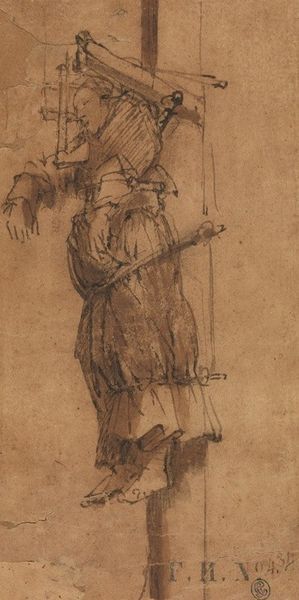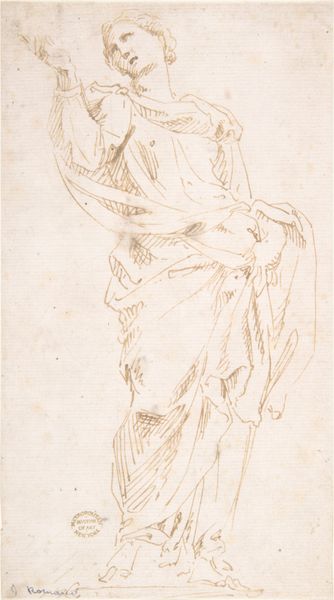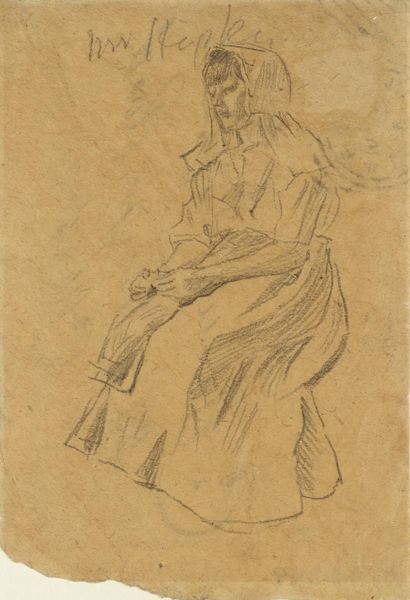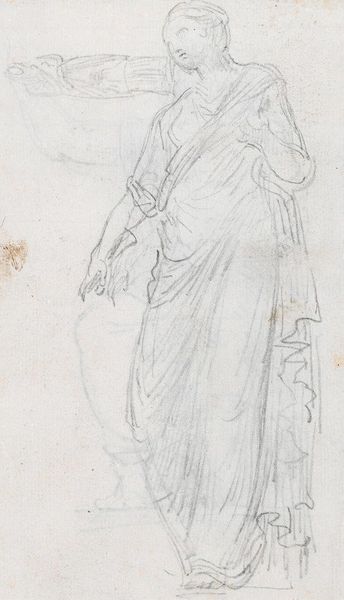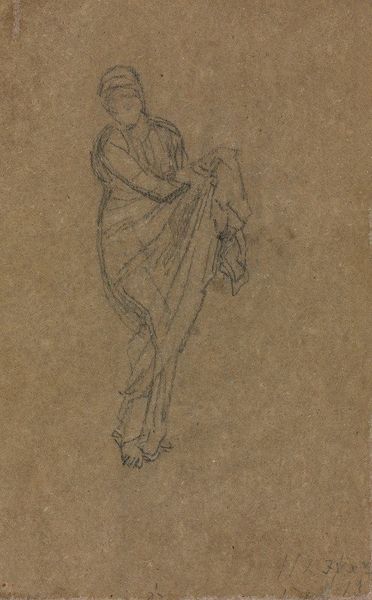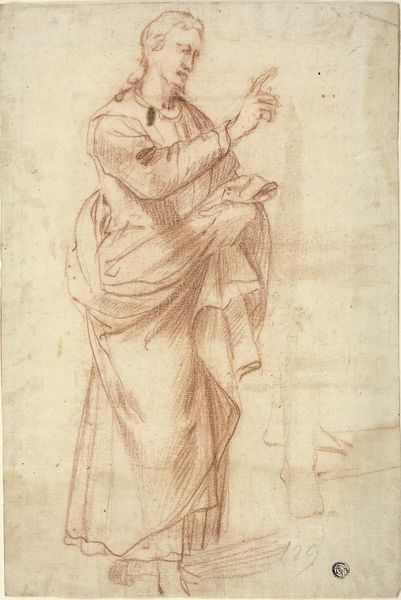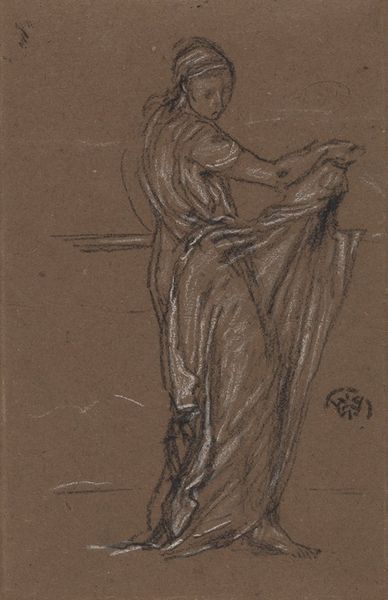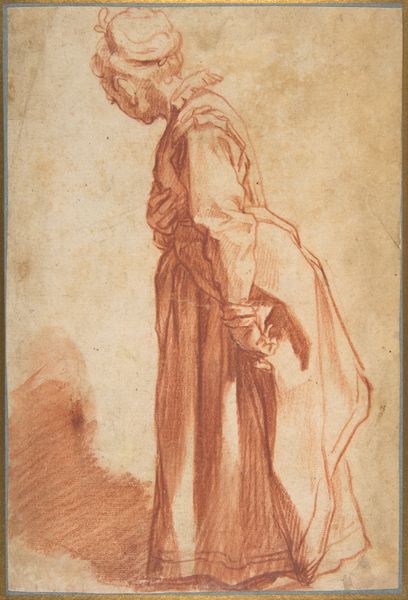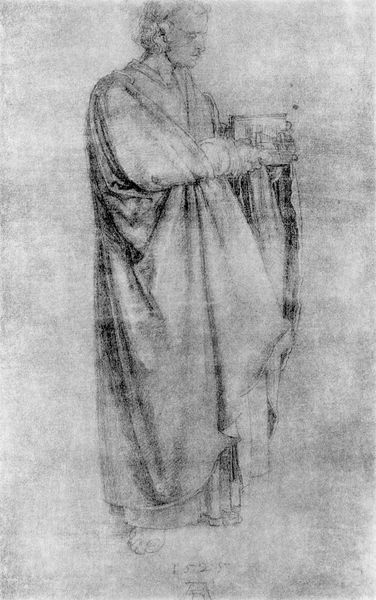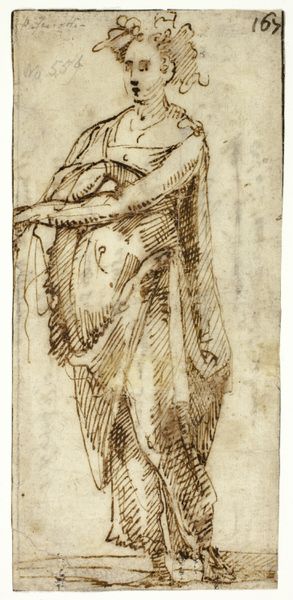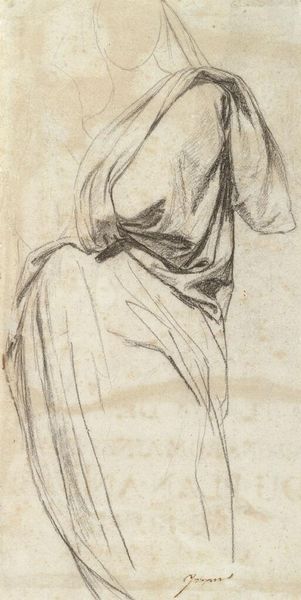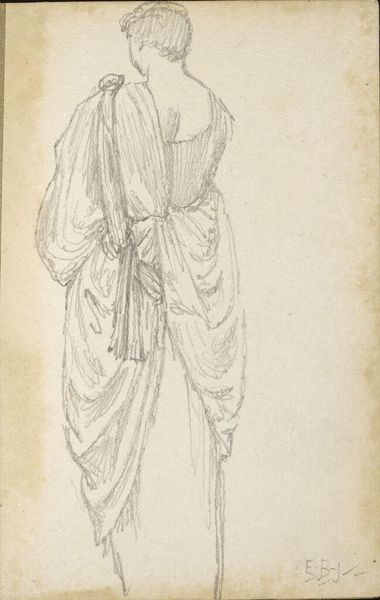
Dimensions: 27.94 x 17.78 cm
Copyright: Public domain
Editor: Here we have Whistler's "The Dancing Girl," created around 1870, using coloured pencils. I'm struck by its ephemeral quality. The lines are so delicate, almost hesitant, yet they convey a sense of movement and vulnerability. What do you see in this piece? Curator: It's a fascinating work to consider through a feminist lens. In the context of 19th-century Orientalism, how does Whistler represent the female figure? Is this an exploration of female identity or does it reinforce prevailing cultural tropes? Does the title itself, "The Dancing Girl," reduce the subject to a mere object of spectacle? Editor: I hadn't thought about it in terms of Orientalism. The sketch-like quality made me focus more on the technique than the subject. So you're saying the title and pose might perpetuate stereotypes? Curator: It prompts the question, doesn't it? Consider the dancer's averted gaze, her clothed body, compared to the era’s other depictions. Where is the agency? What narratives might be missing? What power dynamic does the artist establish between viewer and subject through composition? What might her dance represent to herself, not as a performance, but as an act of cultural resistance? Editor: So, it’s not just a pretty picture, but a statement – or perhaps an unwitting reflection – of cultural power structures. I see it so differently now. Curator: Precisely! By questioning the accepted narratives and considering the socio-political climate, we uncover a richer, more nuanced understanding. We bring her into the discourse. Editor: Thanks, I'm going to be considering Orientalism’s impact on art for a while. Curator: Indeed, an important step for art appreciation.
Comments
No comments
Be the first to comment and join the conversation on the ultimate creative platform.
